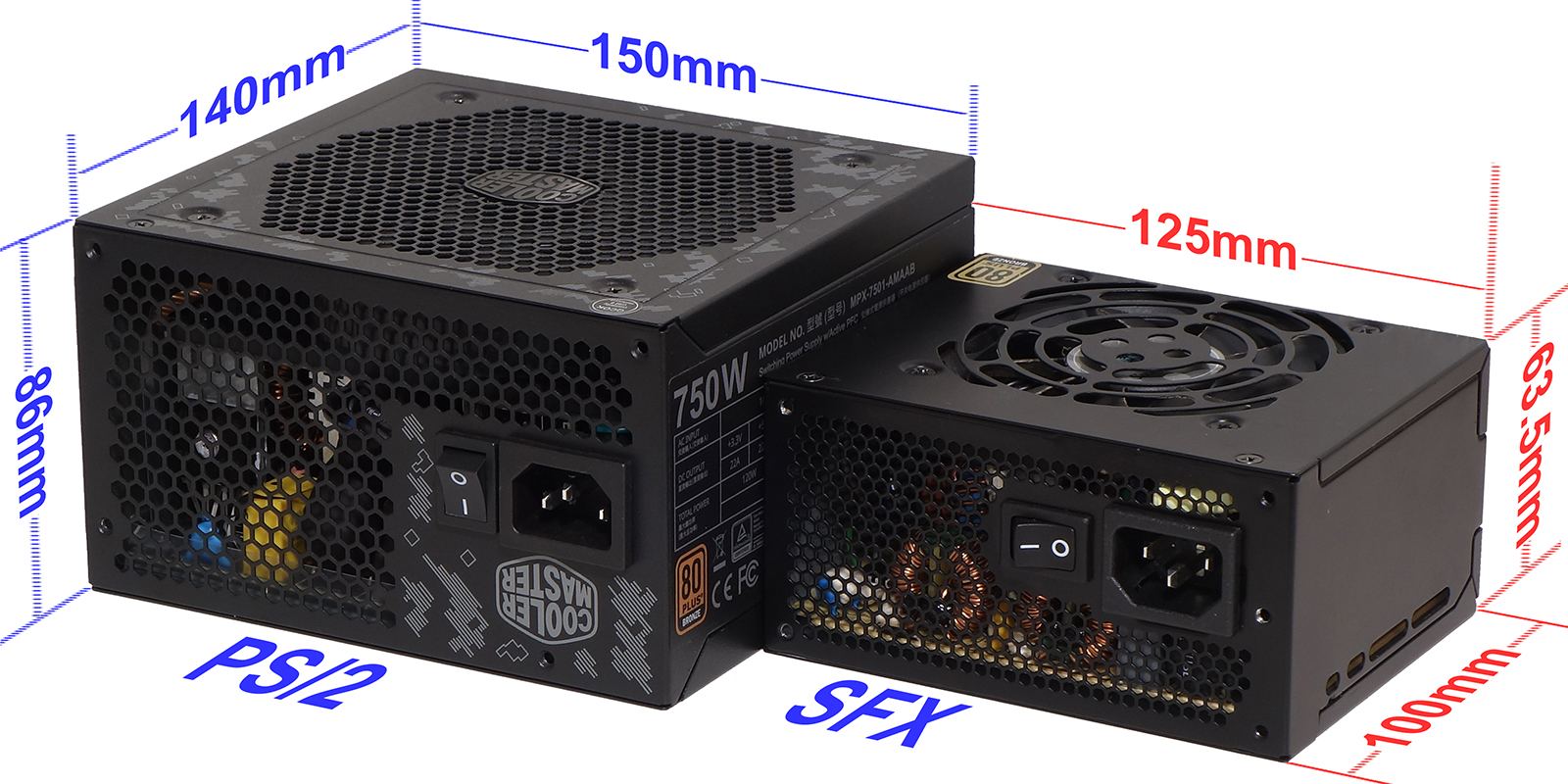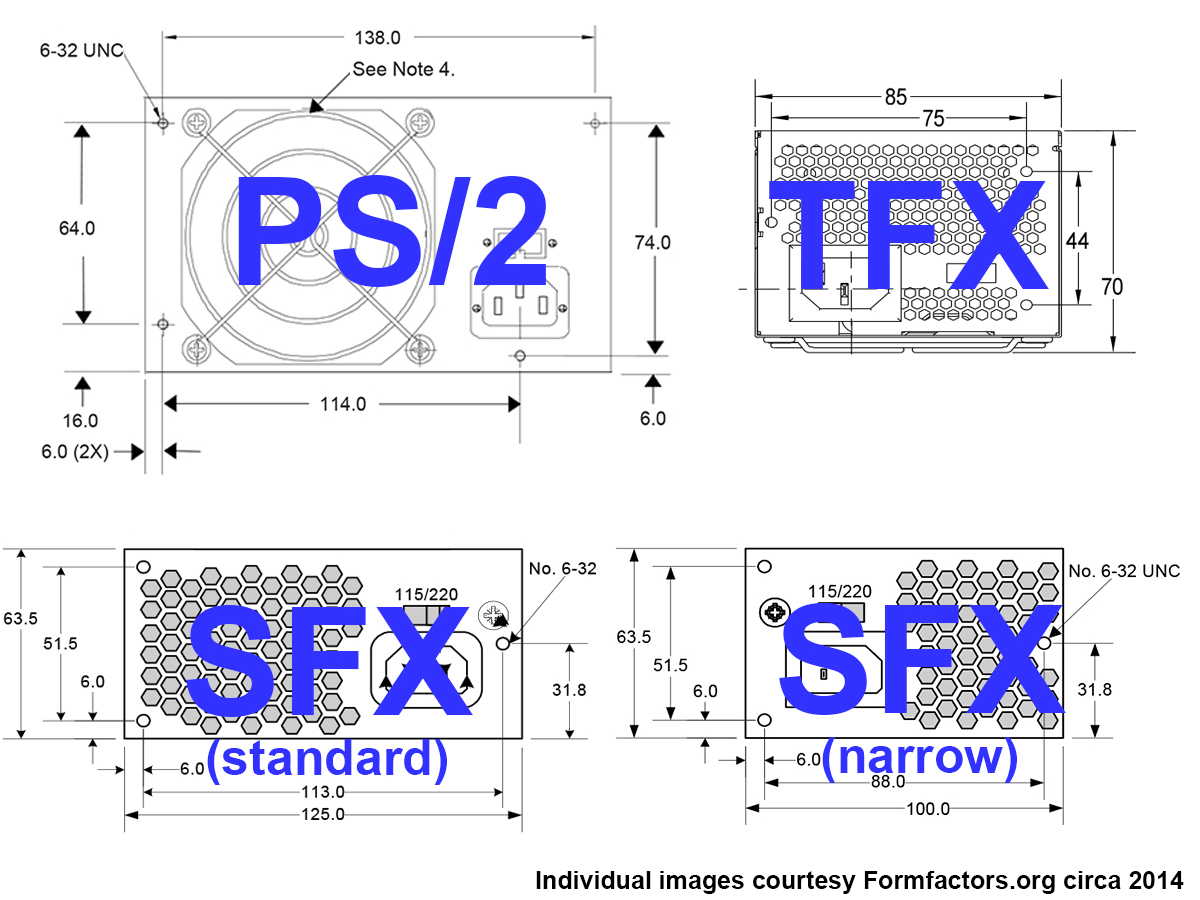A Basic Guide To Motherboard, Case and Power Supply Form Factors
Avoiding incompatible parts and getting the rig you really want is easy when you understand the basics of a few commonly used form factors.

What’s In A Form Factor?
Computer form factors are important for any potential PC builder or upgrader, because they’re a fixed set of dimensions that assure components fit together, and dictate the size of your finished system. After all, the best motherboard for you is one that will fit in your case of choice. These start with the motherboard, and today’s products are primarily derivatives of ATX, which was introduced by Intel in the mid-1990s.

Substandard motherboards often reduce the depth of ATX and Micro ATX boards to reduce cost, leaving the front edge too short to reach the third column of standoffs. In the worst case, builders occasionally crack these boards when installing memory DIMMs near the unsupported front edge. Since that doesn’t happen often, manufacturers take their chances. Because of this, the standard depth of ATX and Micro ATX boards is often defined as a “maximum.”
Other form factors include:
Power Supplies
Power supplies have their own form factors, which like motherboards are defined by dimensions that include mounting hole location. That doesn’t stop anyone (including reviewers) from misnaming them by motherboard form factor, even though ATX defines only the electrical standard for most consumer PC power supplies.

Current electrical standards such as ATX12V and EPS12V are used so interchangeably that one needs only consider the casing configuration and whether the power supply has all the connectors they plan to use. These typically include a 24-pin, an 8-pin (or 4-pin) CPU, and a different 8-pin (or 6-pin) for PCIe graphics. Derived from the newer EPS standard, the 24-pin main connector is typically divisible to fit 20-pin boards. Likewise, the 8-pin “EPS12V” CPU power connector is typically divisible into a four-pin “ATX12V” segment, and an 8-pin PCIe supplemental power connector is typically divisible to fit 6-pin graphics card connectors.

Get Tom's Hardware's best news and in-depth reviews, straight to your inbox.
Cases
Case specifications are based on the motherboard, with EATX, ATX, Micro ATX and Mini ITX all supporting the next size down within that series. While we like to think of things such as mid-tower and full-tower as form factors, these are nothing more than styles since those terms are qualitative rather than quantitative.

One minor note is that footprint refers to how much space a device consumes on your desk or floor, so that a 16-by-16-by-6-inch desktop has a larger footprint (256 square inches) than a 9-by-21-by 24-inch-tall full tower (189 square inches). Height is used for volume, but not footprint.
What About Small Form Factor?
Discussions of “small form factor” again focus on the qualitative rather than quantitative: Various user groups try to pin things down to a maximum case volume (typically in liters), but we don’t think that any of them need to agree upon a set standard for the simple reason that there is no motherboard form factor specific to these designs. Design details alone allow people to apply the label to everything from Intel NUC to Micro ATX.
General Advice
The best style of case for new builders to start with is typically a mid-tower, since the parts for these tend to be less expensive and the space inside expansive. Starting with a mid-tower case usually means getting a full-ATX motherboard, but it’s important to remember that Micro ATX and Mini ITX still fit (they just leave more space in front and below the board). Moreover, the PS/2 power supplies supported by most mid-towers are also extremely common and relatively inexpensive, compared to other form factors having similar quality and capacity.
Feel free to have a look at our How To Build A PC for additional build recommendations.
